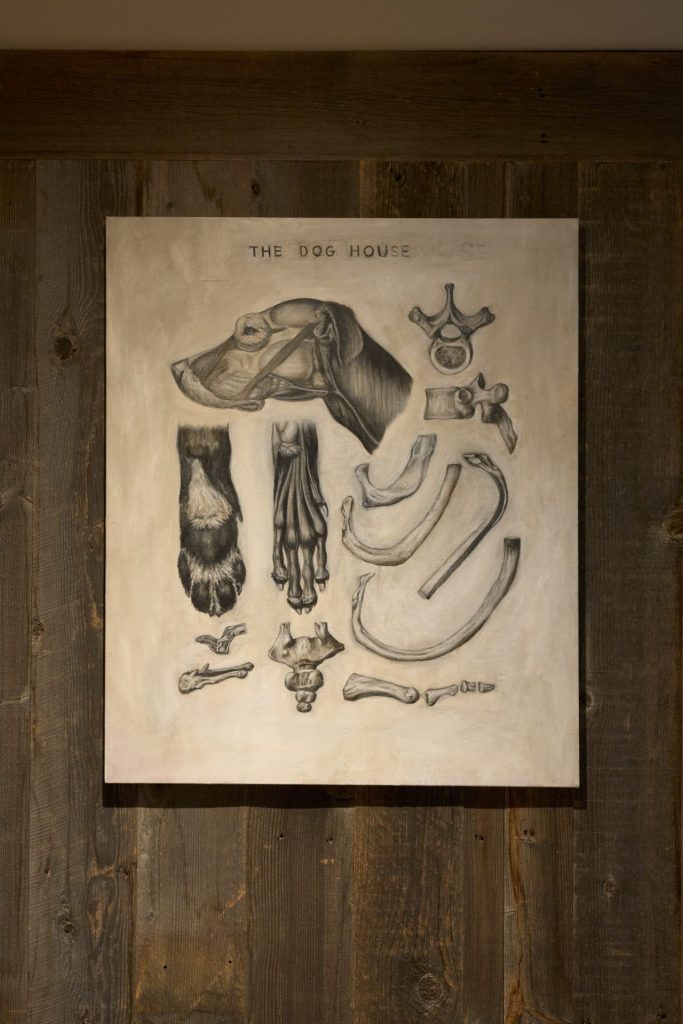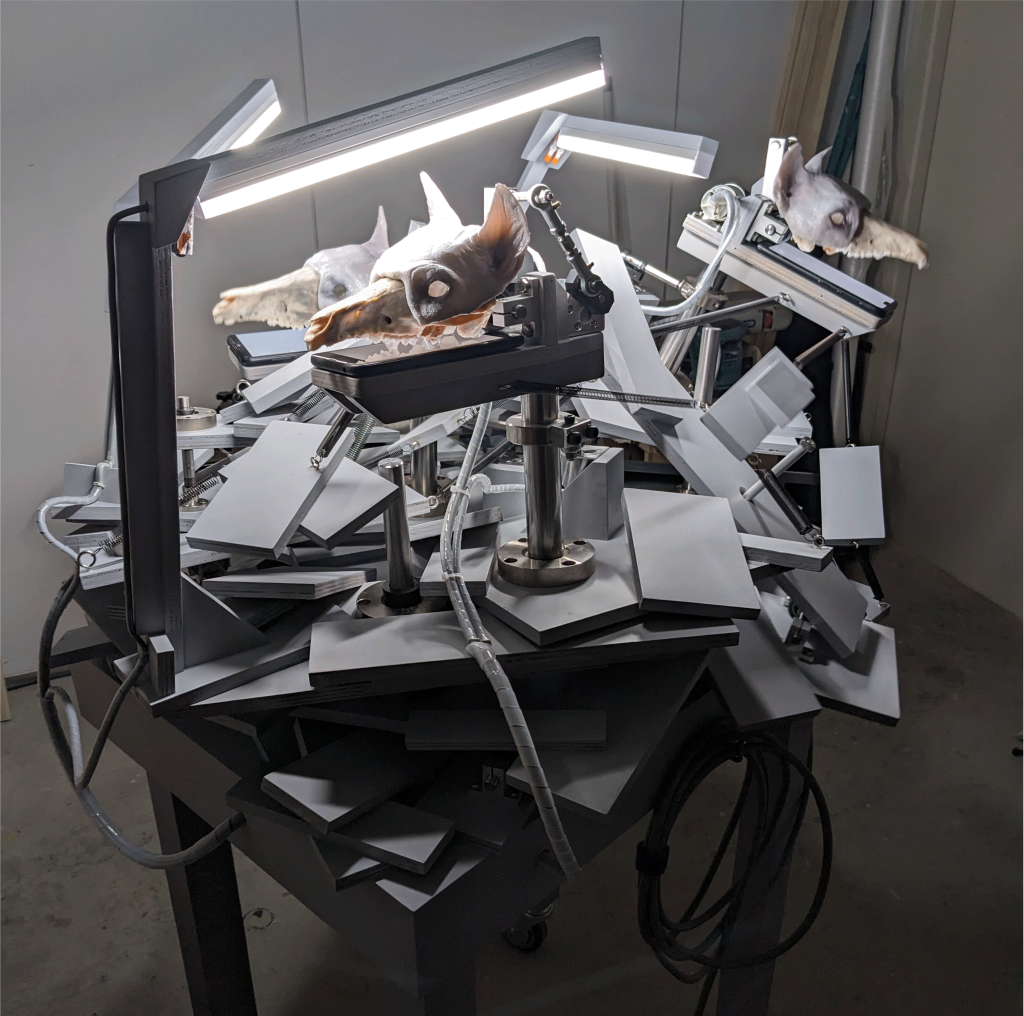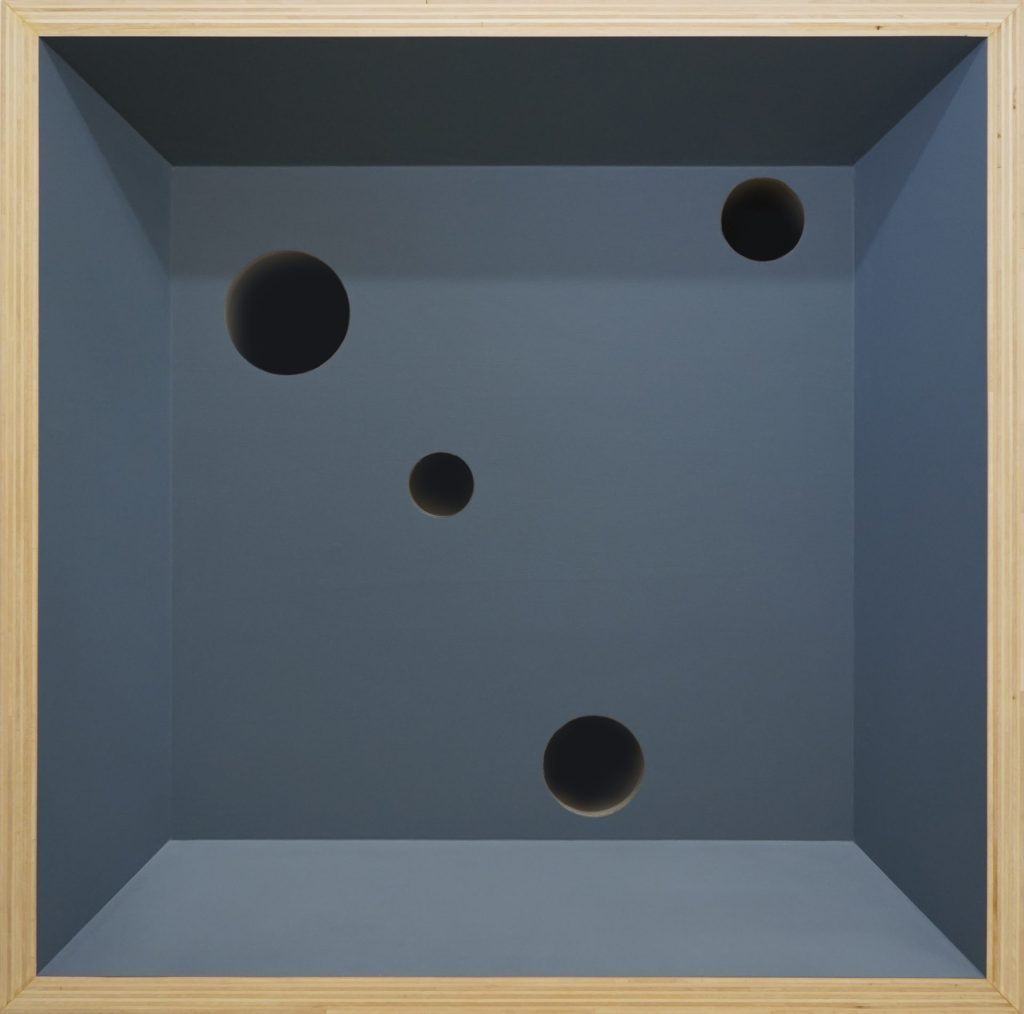EXHIBITIONS
Kei Uruno “Echoes of Silence”
- Information
- Works
- DATE
- 2024-07-12 [Fri] - 2024-08-10 [Sat]
- OPEN TIME
- 11:00-18:00[Tue-Sat]
- CLOSE DAY
- Sun, Mon, National holidays
■ Event: July 20th, Saturday, 3pm –
Composer and artist, Shinji Wakasa will collaborate with the artwork of Kei Uruno in a special sound session.
[Participation fee: ¥1,000 (includes free drinks) / No reservation required]
LOKO GALLERY is pleased to present a solo exhibition “Echoes of Silence” by Kei Uruno. Born in 1993 in Gifu Prefecture, Japan, Uruno graduated from Nagoya University of Arts in 2021 and received a Master’s degree from the same university in 2023. After gaining experience in casting mechanical parts, Uruno began his artistic practice, drawing inspiration from his surroundings, including paintings, and stage art. Focusing on everyday phenomena, his works often feature three-dimensional sculptures and installations utilizing mechanical and theatrical structures. This exhibition will feature new additions to his ongoing <Room> series, as well as a new piece <3 Heads> inspired by Cerberus, a mythical creature known for its three heads and personalities representing one body. The exhibition will also include <2 Spaces>, which employs a three-dimensional space presented in a flat perspective.
Landscapes
Kei Uruno’s works begin with connecting individual parts as he explores the mechanisms and opacity of boundaries, such as those between decomposition and construction, inside and outside, life and death, and the individual and society, embodying his thought processes. Without any maquettes or preliminary studies, Uruno connects often inorganic and abstractly shaped parts and tubes by hand, sometimes finding that even mistaken connections become guiding markers. He describes this process as akin to “painting landscapes or rooms on a blank canvas”. While also carrying a sense of irony and humor, Uruno’s works, through their material existence, attempt to reveal countless “unseen elements“ that are immaterial.
In his solo exhibition in 2021*1 , which was held the year he graduated from university, Uruno connected terms like escape, interruption, and termination to the Esc key function on a keyboard, suggesting that such attitudes are also at the root of his desires and artistic themes. He presents motifs that overlap both his original landscape and the surrounding society, such as a runaway dog and “locked rooms”, representing the desires of both the individual and the collective. Uruno notes that these seemingly negative acts of deviation are actually impulses rooted in the “survival instinct innate in living beings to protect themselves.” One of the works exhibited in the show was an architectural complex made up of multiple locked room spaces called <17 Rooms – Tinnitus>. It features interconnected spaces through the structure of a pipe organ, where the airflow is converted into vibrations, which in turn, create sound that resonates throughout the exhibition space. The intricately structured and visually limited rooms are scattered with traces that can be perceived as fragments of everyday human life or traces of memories, while insects and their carcasses are visible inside and out, and unconnected cables appear abandoned and begin to decay. On the opposite side of the structure, the inorganic spaces with exposed exhaust vents are illuminated by a bluish fluorescent light. Through these structures and presentations, where absence and signs of presence are endlessly felt, what kind of outlook is Uruno exploring?
In the production of <Locked-Room Triad>, which premiered in the same year, Uruno refers to On Kawara’s <Bathroom> series and art critic Yusuke Nakahara’s theory of “Locked-Room Painting”, both of which were introduced in Japan shortly after the War in the 1950s. He analyzes Kawara’s <Bathroom> series as works that “represent the distortions of the external world and the society that created such a reality by portraying the discomfort and sense of entrapment of the world within a locked room, all the while transforming them into distorted canvases”. In <Locked-Room Triad>, where three closed spaces are connected under different orders and sway precariously, Uruno reflects the sense of being “closed yet connected” and the uneaseness, while also structuring the influence and imbalance of the “outside”. Nakahara, in his theory, points out the closed-off view limited to human emotions and the introspective nature of the artist’s mental imagery, suggesting that “ in order to break through the finite conditions of the locked room and discover a passage leading to the external world, we must trun away (…) from our sorrow for the human, and must face the unfeeling world around us.“*2 These internal contradictions and conflicts are only represented when “external matter enters the gaps within human consciousness and emotions”.
Focusing on triptychs as representations of temporality—past, present, and future—Uruno adopts “rooms” in his works as both tangible objects and abstract images, which are evocative of framing in films and photography. This corresponds to the deformed picture plane prominently seen in Kawara’s <Bathroom> series. The external shape of <Bathroom>, premised on a rectangle, deforms while interacting with the internal grid-like distortions, much like how multiple viewpoints are needed to accurately document a single room.*3 Similarly, many of Uruno’s “rooms”, which refuse to offer a comprehensive view from a single point, require viewers to engage from different perspectives. The structure, akin to the canvas’ external shape, represents not only the realism and psychology of the everyday (internal) world but also the structures of the external world. These multiple distances and viewpoints, like proximate points and limited fields of vision, create a kind of imbalance. The emerging sense of unease may result from the temporal, spatial, and psychological distance – alienation – at work.
Through the process of making this solo exhibition, Uruno has revealed that the word “desolate landscape” came to mind. It could be intriguing to explore Hisashi Fujita’s mention of the “aesthetics of desolate landscape”*4 as he is known for his research on the philosopher Bergson, in light of Nakahara’s theory of “Locked-Room Painting,” where he posits that “outmoded humanism” is deemed “a crime weapon.” One of the contexts here involves the ways of “distant and indirect” approaches to works based on concrete phenomena or regions, as mentioned above by inserting “external matter” as a gap. The representations depicted by Uruno’s praxis and works, utilizing the fictitious facade, are landscapes that replace the discrepancy between a subjective worldview and its transforming surroundings with those variables. What appears to be real may arrive as something unfathomable from outside the field of vision. *5 As viewers add their experiences and memories, the works also evolve to form new layers and various forms of connection.
Noriko Yamakoshi|Curator
Noriko Yamakoshi | Independent curator and writer. Recent exhibitions include: “Games. Fights. Encounters” (2020-2021) and”Choreographing the Public” (2019-2020). Co-writer of “la_cápsula – between Latin America and Switzerland: An Exploration in Three Acts” (2020) and the interview essay “<MJ> Yuichiro Tamura” (2019), among others.
She holds a Master’s degree in Curation from Zürcher Hochschule der Künste.
1 https://www.artgummi.com/all-archives/10158/金沢アートグミ2021年度企画公募展 宇留野圭【escape】/ (Japanese only)
2 Yusuke Nakahara “Locked-Room Painting” |“From Postwar to Postmodern, Art in Japan, 1945-1989: Primary Documents”, Edited by Doryun Chong, The Museum of Modern Art, 2012
3 Yusuke Minami, “On Kawara’s The Bathroom”, Art and Criticism 5, Keio University Art Center, 2016
4 “Week End / End Game / Yuichiro Tamura”, 2017
5 David Lapoujade, “L’Alteration des mondes” ( Japanese trans. Chiaki Hori ), Getsuyosha Limited, 2023
Instagram @shinji_wakasa_works
Music https://linktr.ee/shinjiwakasa
Web https://www.hitsujisound.com/
Kei Uruno
1993 Born in Gifu
2021 B.A. Nagoya University of the Arts
2023 M.A. Nagoya University of the Arts
Solo Exhibitions
2024 Unexpected Connection (FOC/Ishikawa)
2023 CLEAN ROOM (MYNAVI ART SQUARE/Tokyo)
2023 KEY WAY (BankART Under35) (BankART Station/Kanagawa)
2023 Storeroom and Structure (Storeroom and ○○/Aichi)
2021 ESCAPE (Kanazawa Art Gumi/Ishikawa)
2019 The pilot (YEBISU ART LABO/Aichi)
Group Exhibition
2023 MPN (Art Center Ongoing/Tokyo)
2023 ART AWARD TOKYO MARUNOUCHI 2023 (Shin-Marunouchi Building 3F/Tokyo)
2022 CAF Award 2022 Selected Works Exhibition (Daikanyama Hillside Forum/Tokyo)
2021 non-painting (YEBISU ART LABO/Aichi)
2021 DELTA (KAYOKOYUKI, Komagome SOKO/Tokyo)
2021 Awai no Shiten vol.2 (Aichi Prefectural Museum of Art Gallery/Aichi)
2019 C Laboratory Aichi (Aichi Triennal Collaboration Project) (Art Lab Aichi/Aichi)
Awards
2023 ART AWARD TOKYO MARUNOUCHI 2023 Eriko Kimura Jury Prize
2023 ARTIST’S FAIR KYOTO 2023 Mynavi ART AWARD, Grand Prize
2022 CAF Award 2022 Kohei Nawa Jury Prize
2021 Nagoya University of Arts Graduation Works Exhibition Grand Prize
Scholarships and Grants
2022 Mitsubishi Corporation Art Gate Program Scholarship Student
2021 Japan Arts and Culture Scholarship
Artist Website
www.keiuruno.com/
Instagram
@kei_uruno
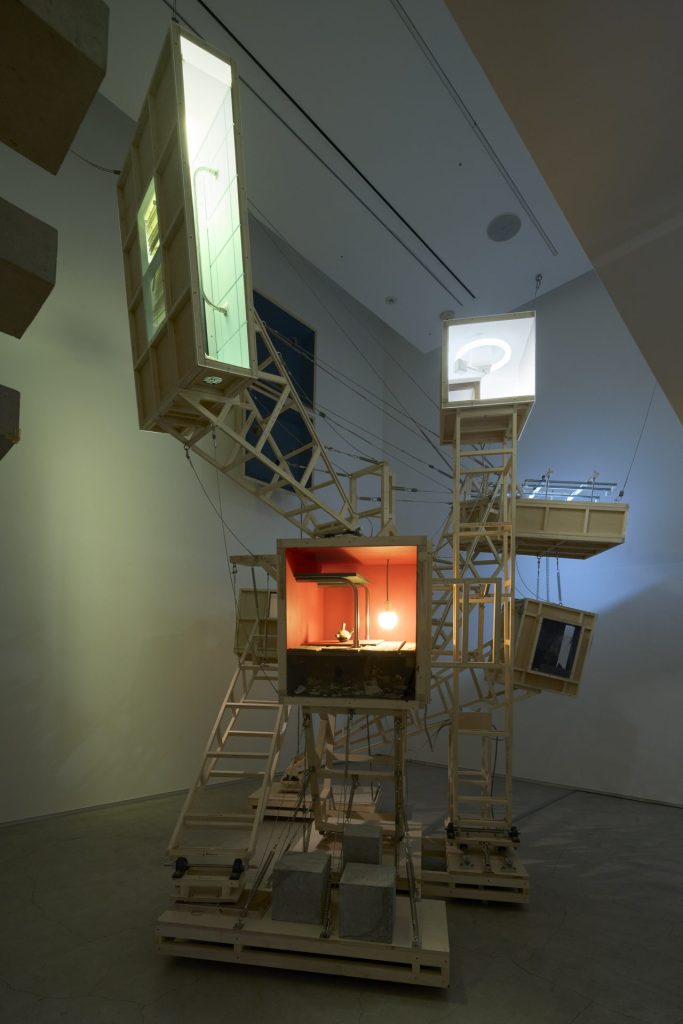
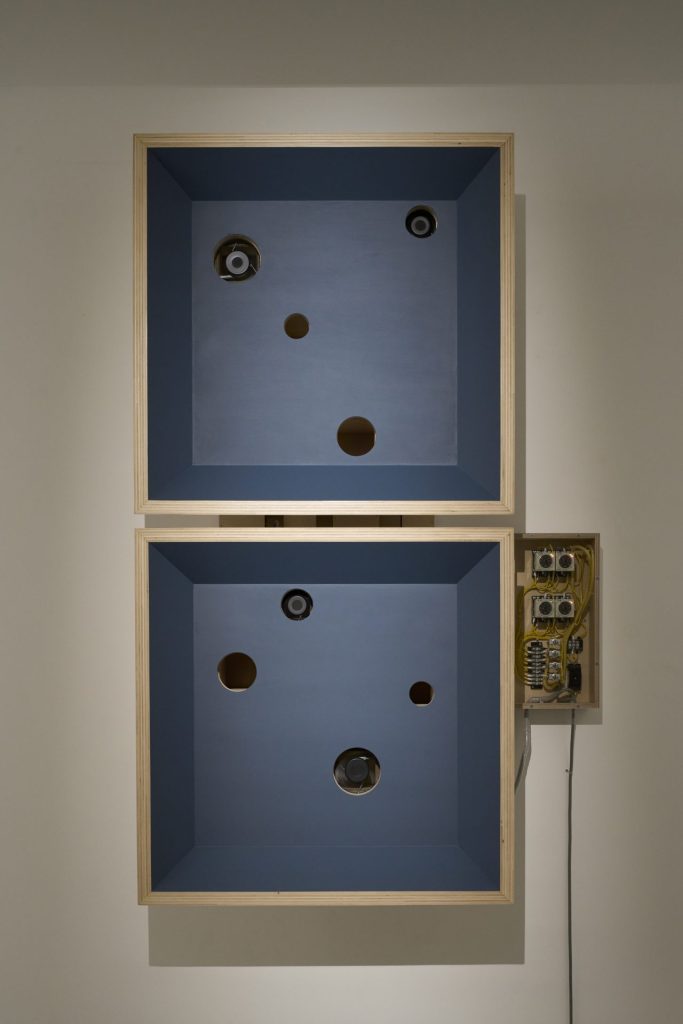
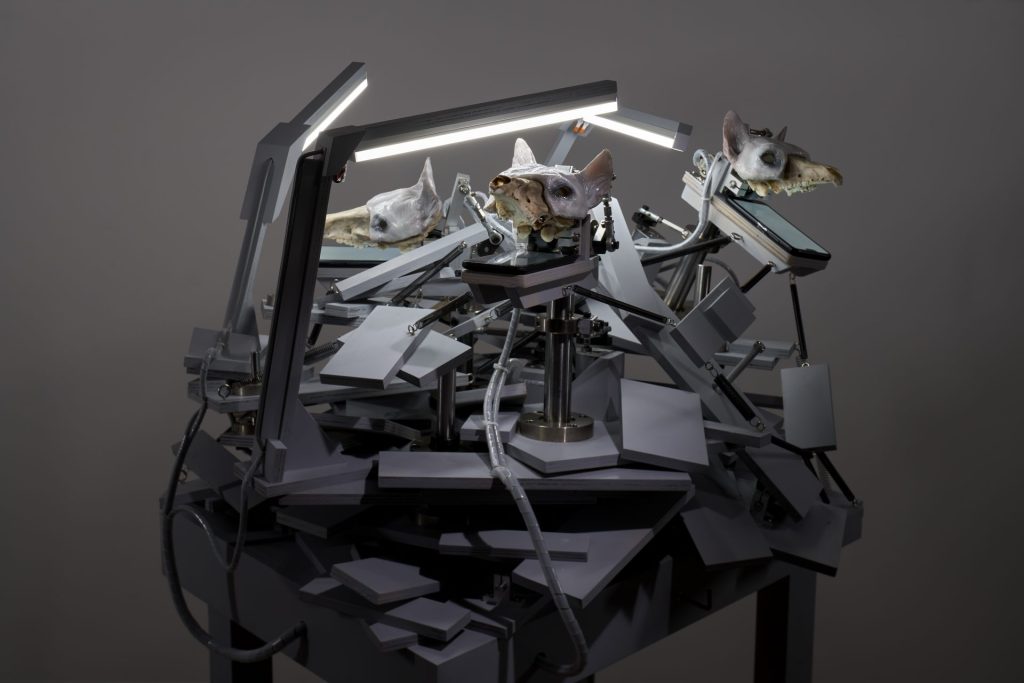
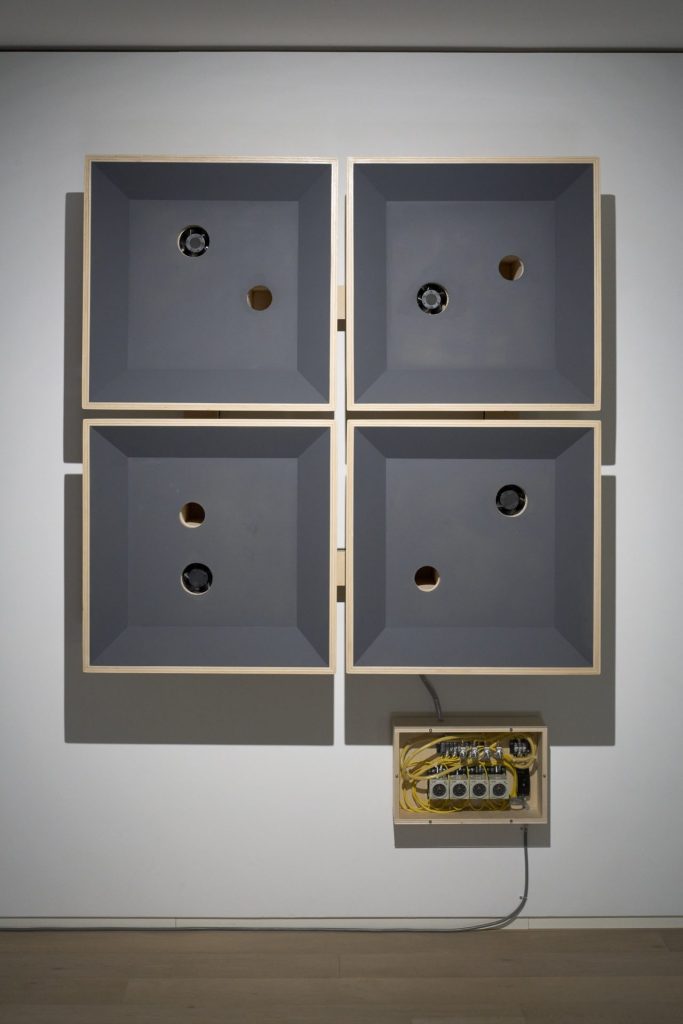
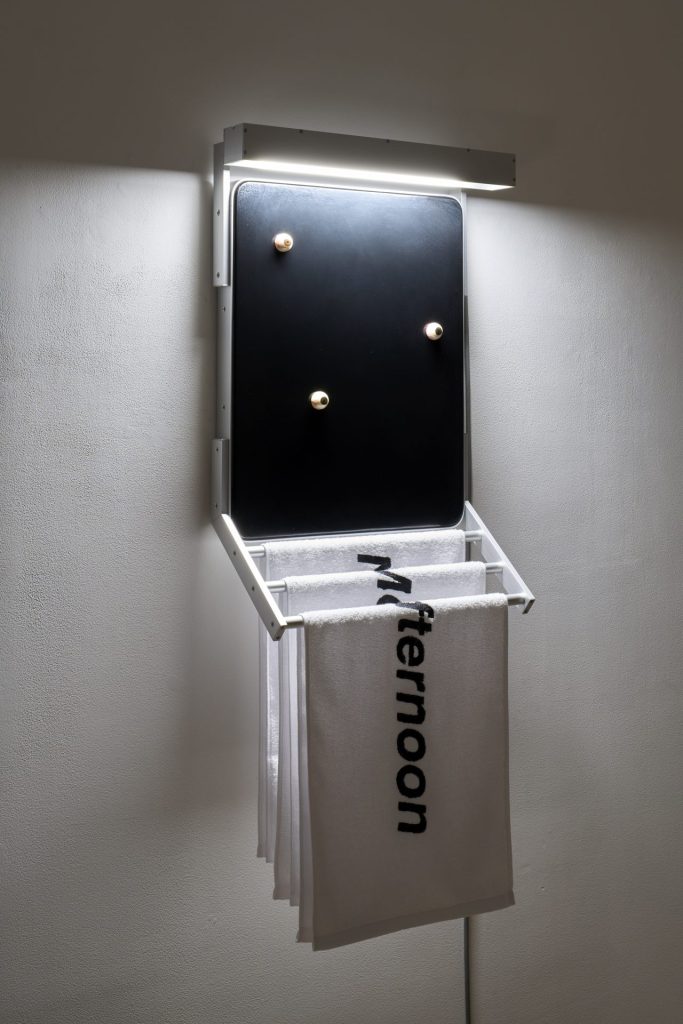
Afternoon/Night》2024, Paint on wood, acrylic on towel, aluminum, polyester resin, LED, H107.5 W47 D19.5 mm[撮影:大河内禎]
